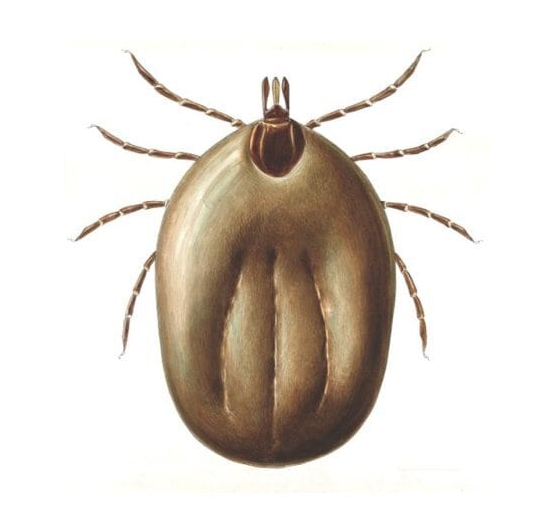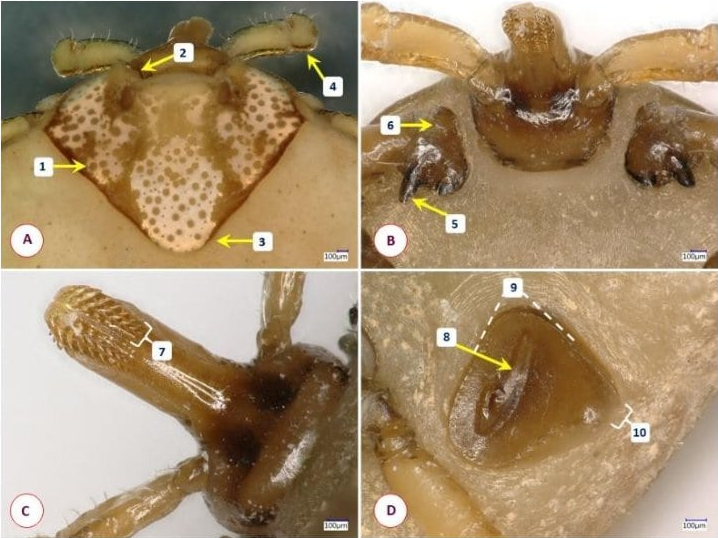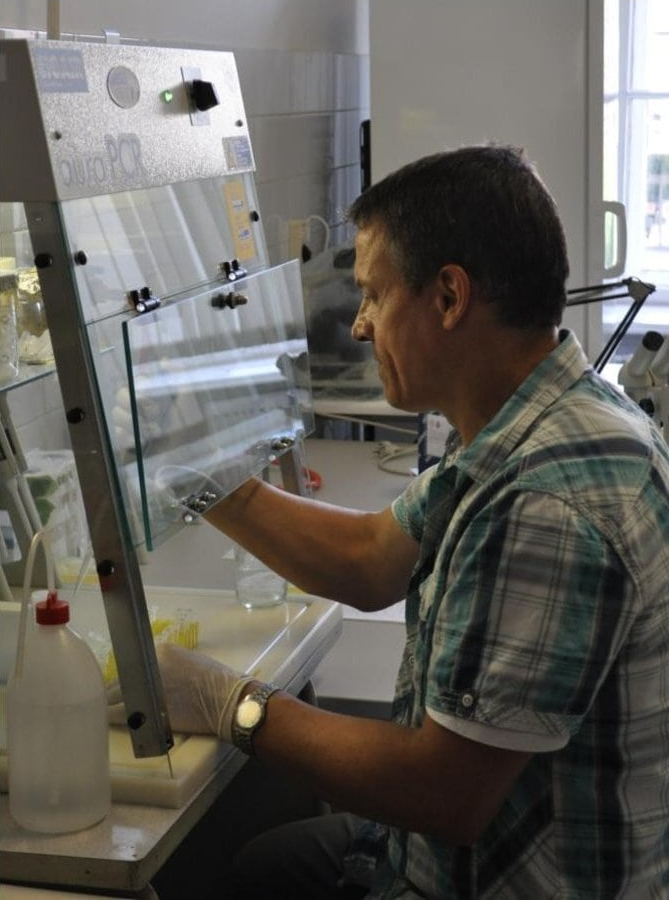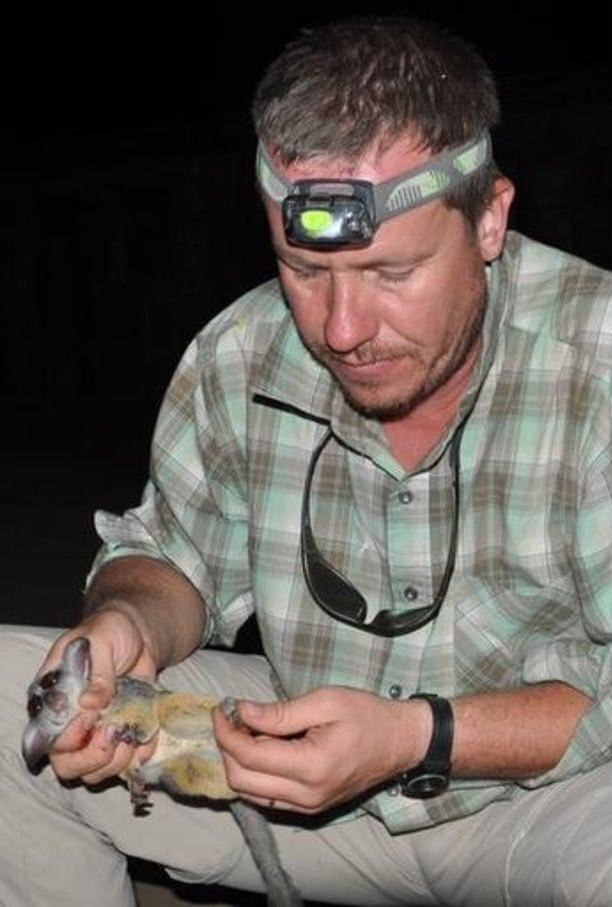Our Research Group was established on July 1, 2022. The main reason for this was that in Hungary, due to climate change, blood-sucking arthropods and vector-borne pathogens transmitted by these represent increasing risks from a veterinary-medical point of view. There is no geographical barrier between Hungary and the Mediterranean region which could prevent the arrival of new vectors and vector-borne pathogens carried by wild animals from the south, and (mainly due to birds, bats) from other directions. In the long run these can even become established. The aim of our research group is to map especially important blood-sucking arthropods (hard and soft ticks, mites, fleas, dipterans, bugs) for species, genotypes new to Hungary or to science; to trace the increasing or declining significance of these in our country; and to establish an international genetic reference collection.
External Links
Our first results were as follows. During a 2.5-year-long study 3818 ticks were collected from the vegetation in an urban habitat of Budapest, including Ixodes ricinus, Ixodes frontalis and Haemaphysalis concinna. Ixodes ricinus adults and nymphs showed year-round activity, whereas H. concinna was not active during winter months and early spring. Most I. frontalis nymphs were collected in late winter and early spring, whereas the peak activity of larvae was during late autumn. Interestingly, during the spring, the peak activity of I. ricinus adults and nymphs was later (in May) when preceded by a warm winter in 2020. In contrast, the 2019 and 2021 spring activity peaks occurred in March and April after sharply rising temperatures in February. This shift in the peak activity of I. ricinus coincided with the initiation of questing activity of H. concinna. Three main morphotypes of I. ricinus were found. However, these were not significantly different in their mitochondrial haplotypes and phylogenetic clustering from typical specimens of this species. On the other hand, I. frontalis was represented by two haplogroups, between which there were no recognizable morphological differences.




According to the plans for 2023, we carried out a national bird tick survey. In the study, we collected 956 ticks from 38 species of songbirds. Our observation served as evidence of the first European population of the tick species Hyalomma rufipes native to Africa. For the very first time, we established the occurrence of the tick species Ixodes caledonicus in the Carpathian Basin and summarized the literature data on European findings of this tick species. Furthermore, among our more important findings was that the host specificity and host selection of fly species found on bats in Eastern and Central Europe can be influenced by seasonal differences in host behaviour and ecology, the intensity of infection of individual hosts, and the species’ composition of the local host community. As a result of an international cooperation, it was possible to describe three species of bat ticks new to science (Ixodes nipponrhinolophi, I. fuliginosus, I. fujitai) in Japan. In Pakistan, a new Eucampsipoda bat fly species was discovered; while in Malta we confirmed the presence of the African blood-sucking louse, Linognathus africanus on goats. In collaboration with South Africa, we published the first comprehensive study on the diversity of tick species infesting the brown greater galago (Otolemur crassicaudatus). Through systematic studies, it was proven that bat ticks and cavity-dwelling ticks of carnivorous mammals and birds are a taxonomically uniform group. This was possible owing to the first ever genetic analysis of the rare species Ixodes rugicollis.




